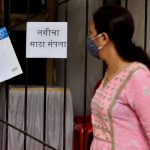How to unlock all Research Titles in Pokémon Snap
If you’re the type to go for 100% completion, then you’ll have to unlock each and every title in Pokemon Snap. Here’s how to unlock all...
If you’re the type to go for 100% completion, then you’ll have to unlock each and every title in Pokemon Snap. Here’s how to unlock all...
Critics argue that an expanded unemployment benefit is hurting the economy, but President Biden and other officials disagree. Here’s the latest in politics.
Early in the COVID-19 pandemic, healthcare systems scrambled to modify patient care processes—particularly when it came to strategies aimed at reducing the risk of hospital-related complications....
More than ever, patients are using telehealth to ask doctors and nurses about worrying blood-pressure readings, nauseating migraines and stubborn foot ulcers. But for patients with...
Health authorities in Thailand expressed concern as they announced Friday that the country’s capital has confirmed a record 869 new coronavirus cases as it battles a...
A federal grand jury has indicted four former Minneapolis police officers in connection with the death of George Floyd, alleging the officers violated Floyd’s constitutional rights,...
Europe’s medicines watchdog said Friday it was checking whether COVID-19 vaccines made by Pfizer/BioNTech and Moderna could be linked to rare cases of blood clotting, but...
At its peak, the current COVID-19 pandemic has all but brought social and economic life to a virtual standstill. Although lockdowns and social distancing have proven...
The senator also discusses housing policy, child care costs, billionaires and more.
Google is working with its partners on a new official docking station category for the Works with Chromebook program








